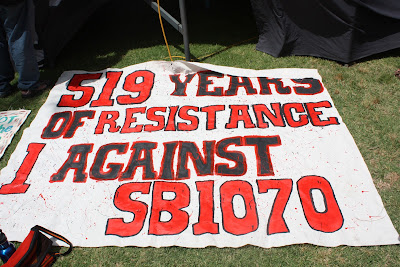YouTube:
An International Plot
Finally Jose Luis Ponce de Aquino was taken seriously by the
electoral authorities in the case of the massive purchase of votes by the PRI
and the alleged illegal peñista campaign financing … Or so it seems for now.
The American businessman who sued in
a California court the team of Enrique Peña Nieto, allegedly for breach of a
payment of millions, now launches more serious charges, which are documented in
PROCESO. According to him, the web
of financial maneuvers to power the PRI campaign has an international reach, as
well as probable links with organized crime.
Extending from Mexico, but with ramifications in other countries,
politicians and businessmen contrived to formulate complex financial transactions in
order to triangulate multi-million dollar monetary resources and buy the
presidency for Enrique Peña Nieto. In this complex operation there is also
evidence of money laundering.
Information in the possession of PROCESO indicates that it
is an international financial operation that extends into Spain, Italy, Israel
and the United States where resources were triangulated eventually to be
deposited in Monex Bank for use by the PRI in the presidential campaign of Peña Nieto.
Revealed in this network are characters whose names are
linked to the PRI's presidential candidate and the companies of GAP, HIGO,
Jiramos, and GM Global as well as of the banks Mifel and Monex.
The scheme is similar to the money laundering operations of
organized crime, says Deputy PT Jaime Cardenas, head of the legal team of the
Progressive Movement coalition and who as counselor to the Federal Electoral
Institute (IFE) participated in the investigation of the case Amigos del Fox,
which triangulated million dollars from abroad to the campaign of the PAN
presidential candidate in 2000.
The pending investigation
The IFE Control Unit and has a line of research that points
to the location of money presumably transferred from the foreign sources. This
is considered in its report on the progress of the investigation arising from
complaints made separately by the PRD and the PAN against the PRI for alleged
vote buying through Monex Rewards cards, also used to pay delegates and representatives
of ballot box locations.
Among the research included in the record Q-UFRPP 58/12 of
the Unit now in the charge of Alfredo Cristalinas Kaulitz, as regards the fourth
point - establishment of the use and linkage of Monex cards with the electoral
process - it is expected that the investigation will uncover from which
countries arrangements were made and via what businesses in relationship to
which political parties were resources allocated for the funding and use of
such cards.
In the path of inquiry, made public at a meeting on Thursday
26 - first is the identification of the types of funding and the use of the
cards. Second, the determination of the expenditures made in each of the lots
of cards and this is where would become evident the date of the transactions,
their amount, the city and country of origin of the funds.
Also to be investigated is the relationship of individual
“legal representatives, shareholders, agents, employees of corporations, among
others", with political parties.
This is where the Control Unit strand seeks to unravel the
complex financial strategy of millions of dollars which funded the campaign of
Enrique Peña Nieto, who on June 14 revealed the connection to Mexican-American
businessman Jose Luis Ponce de Aquino, owner of the Border Television Network
television company LLP.
In a complaint filed in the U.S., Ponce de Aquino stated in
October last year, that Enrique Peña Nieto operators offered him a contract for
56 million dollars to promote the PRI presidential candidate in the US in
coordination with the campaign in Mexico.
The businessman stated that this agreement was actualized by
this amount of money deposited by the representatives of the PRI's presidential
candidate in Banco Monex and Banco Mifel in a single day.
Not only that but Ponce de Aquino said he witnessed the
alleged transfer of bank accounts with money of unknown origin, from banks
based in Italy, Israel "and another Portuguese or Brazilian bank" to
an account at Monex Bank branch in Mexico City on behalf the company Jiramos,
owned by Alejandro Carrillo Garza Sada, who had contacted him to do the
advertising campaign for the PRI in the United States.
 |
| Ancestral Indigenous Trade Corridors of Anahuac |
In the suit filed in Central District Court of California
for fraud, after allegedly Peña Nieto representatives failed to make good on
the payment of the $56 million in deposits made at Mifel and Monex, the entrepreneur
states something more serious: suspicion that there might be money from
organized crime included those transactions.
The case of Control Unit of the IFE points out: "That C. Jose Luis Ponce de Aquino claims to have received death threats from C. José Alfredo Carrillo, Alfredo Carrillo Chontkowsky and Hugo Vigo,
who warned him that the $56 million was in exchange for an image campaign
in the U.S. for the PRI candidate which ‘came from companies related to the narco
industry’, and that businessman Alejandro Carrillo Garza Sada told him, ‘You
better not do anything or I am even going to prohibit your entry to Mexico
and I will take your business’, the latter through its representative, the C.
Francisco Torres."
When reporting this story publicly, Ponce de Aquino
empowered the Movimiento Progresista and the PAN to intercede with separate
complaints with the IFE against the PRI for alleged use of resources
"of unknown origin" and that the financial authorities began to
search the home country and the path of those 56 million dollars that the
businessman says were deposited at Monex and Mifel and served for the campaign
Peña Nieto.
Eleazar Camerino Marquez, representive of the PRD to the
IFE, argues that the Attorney General's Office and the National Banking and
Securities Commission and the Control Unit of the Institute must have in hand
presently the hard data and specifics of these transfers along with account
numbers, amounts, cash flows and allocation of funds.
On June 19 the official of the PRD made a request to the
Control Unit to be informed of the progress of the investigation into this
case. Alfredo Cristalinas said in the report UF/DRN/7194/2012 that such
information was embargoed until the investigations conclude.
"There is no way to hide the scandal of the funds
triangulated via Monex. It is clear that the financial system is not unique to
Mexico, we are in an age where everything is interacting; this we saw in the
case of HSBC where outside bodies detected the trail of money laundering. There
is also a history of previous investigations of money laundering via Monex due
to connections with international illicit drug commerce involving Spain and
other European countries. This trail is recorded and therefore would be a line
of investigation that the authorities should investigate.", said the PRD
representative.
(Excerpt from article appearing this week in the magazine PROCESO 1865, already
in circulation.)
Translation:
TONATIERRA
Links:





































